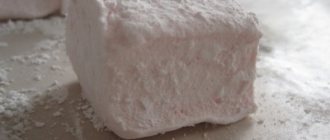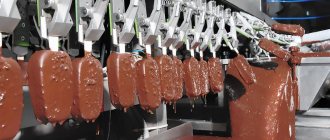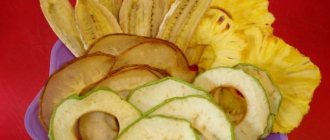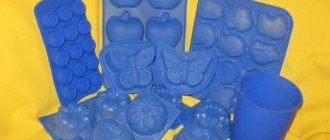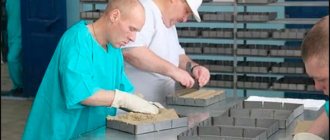Juice production is one of the popular business areas nowadays. Modern society is focused on a healthy lifestyle, which, among other things, involves the consumption of healthy food and natural juices.
Let me remind you that juice therapy is an effective weapon against many ailments.
Including juices in the diet is not only prevention, but also treatment. Finding an alternative to natural juices is unrealistic. All this suggests that there will always be a demand for juices, and this in turn indicates the prospects of a business idea based on the production of juices. To start, you need to resolve the issue of production premises, conveyor line, raw materials, packaging - we’ll talk about this in the article.
Which room to choose for juice production
The first difficulty begins with choosing a room. What kind of premises are needed for the production of juices and the development of this business, and in what place should this premises be located?
You need to have a fairly large room for this business, since it must accommodate a whole line for the production of juices, and there must also be an area for storing raw materials.
It is best to purchase as many raw materials as possible at a time, so this part of the room should be quite large.
The best choice for the location of the premises in which this business will develop is a place outside the city, since such a place consumes the least amount of money.
If you rent a room outside the city, the rent and various services will be several times cheaper than city prices.
Benefits and likely risks
The main advantage of the business is quick payback. But this is only possible with well-established sales channels.
| Advantages | Possible risks |
| Ease of operation on an automated installation | Problems with the supply of raw materials |
| Product manufacturing speed | High competition |
| Possibility of using technologies that reduce the cost of the final product | Problems with production technology, instability of quality |
To pay for the equipment and scale the business, you can open points selling soft drinks in cups. In summer, the demand for cool juice is high.
Juice production is a complex business. Due to high competition and declining demand, you can succeed in it only by developing your own niche and sales channels.
What equipment to choose for juice production
In order to produce juice, you will need:
- Water treatment systems with water filters.
- Pumps.
- Juice storage tanks.
- The device with which this juice will be bottled.
- A device that will remove packages of juices and then seal them.
You can also add a huge amount of different equipment, but this is the most basic.
Usually about seven to eight different types of equipment are used, everything certainly depends on the preferences of the entrepreneur himself.
Types of juices
Currently, the following types of juice products are produced in the Russian Federation:
- natural - an unfermented product, made from various types of raw materials, does not contain chemical elements except sorbic and ascorbic acid within acceptable limits. There are clarified and unclarified ones.
- Juices with added sugar . Made from sour fruits with the addition of sugar syrup. One of the manufacturing options is blending - adding additional juice to the main juice. This is done to obtain improved taste.
- Concentrated - they are obtained from ripe, carefully selected fruits or vegetables, from which moisture is partially removed mechanically.
- Nectars - they are made by mixing fruit or fruit and berry purees with water and sugar syrup, the percentage of which can reach 50%.
- Dry juices are a complete alternative to natural juices and are produced by freeze-drying. It is used in cooking as a base for jelly, compotes, and fruit drinks.
The structure of fruit juice production, depending on the taste preferences of consumers, is as follows:
- 24% – apple nectar;
- 23% – multifruit juice;
- 19% – orange;
- 14% – peach;
- 13% – fruit mixes;
- 7% – the rest.
Now there is a pronounced increase in production volumes from domestic juice producers.
How to start a juice business
In order to start doing this business, there are four main components that the entrepreneur himself must have:
- The building in which the business itself will develop.
- Conveyor line.
- Raw materials without which it will be impossible to start.
- The packaging itself, in which the finished product will be packaged.
In order to create the so-called minimum, you will need at least one line, with the help of which it will be possible to produce the juice itself, as well as at least one barrel into which the juice will be poured.
Usually one barrel holds about three hundred kilograms. And, naturally, you will need bags in which the juice itself will be poured.
Such packages will need to be invented even earlier than starting this business.
One production line produces a very large amount of juice in one hour, about two tons.
One of the hardest things to do in this business is to start selling the juice itself. But in essence, the products themselves can be delivered to various kiosks and stores, which will then sell them for a certain percentage.
This is the best choice for a start-up business.
One can hope for large networks only after a large amount of time of successful work, because large companies are afraid to get involved with a start-up company, because there is huge competition in this area of business and the start-up company may simply break down.
Business relevance
In the 90s, the Russian markets were mostly represented by imported juice products; only 10% of goods in this category were made from raw materials grown in the country. Until now, Russian producers remain very dependent on raw materials; many popular vegetables and fruits either do not grow in the country at all or are grown in insufficient quantities.
In this case, concentrates, products that are imported from other countries, come to the rescue. The ban on the import of raw materials from EU countries adopted by the Russian government in 2014 aggravated the situation, but at the same time it gave impetus to an increase in the volume of vegetables and fruits grown within the country. The most favorable for this is the Southern region.
At the moment, more than 2,000 types of juice products from domestic producers are available to the end consumer. This growth is due to society’s desire for a healthy lifestyle. Natural juices and products with a high content of nutrients are at the peak of popularity today. Rosstat provided information that states that the production of fruit and vegetable juices increased by 25% compared to the previous year. This is a consequence of the import substitution program.
We recommend reading:
- how to start a bottled water production
- caramel apples - from recipe to business
- donut production
- making cottage cheese
- how to create a sugar production plant
Manufacturers are interested in supporting small and medium-sized businesses that can handle the production process from start to finish. Their prerogative is inexpensive and high-quality raw materials, so they will in every possible way assist farms and enterprises that can assist in logistics at all stages of production: from harvesting and processing, to sublimation of finished concentrates for the manufacture of finished products available for consumption by the end consumer .
We can say that the production of juice products is a popular, low-competitive business with broad prospects and opportunities for its development.
What documents are needed to open a juice production business?
Before starting a business, you will need to familiarize yourself with SanPiN 2.3.2.1078–01 11/14/2001, sanitary rules for enterprises of the brewing and non-alcoholic industry No. 3244–85 04/09/1985.
It is more profitable to register an enterprise as an LLC, for which you need to submit the appropriate package of documents to the tax authorities. You will also need constituent documents, conclusions of the fire service and SES, contracts for waste removal and disposal, a quality certificate and a production level certificate.
Step-by-step launch instructions
After creating a clear business plan, you need to officially register the enterprise. OKVED – 15.32. It is believed that it is better to choose the LLC form for the convenience of attracting investments when expanding the business.
Juices can be produced only in accordance with GOST or technical conditions (TU) developed at the enterprise itself. Each option requires its own certificate of conformity (they are issued by Rospotrebnadzor).
Further stages of the business project implementation:
- Workshop rental and preparation.
- Purchase and installation of equipment.
- Concluding preliminary agreements with buyers, creating a website.
- Purchase of raw materials.
- Hiring staff, training operators.
If you plan to set up large-scale mass production, you will need an advertising campaign and invitation of distributors.
How is concentrated juice made?
Concentrated juice is not intended for direct sale or consumption. It is a raw material necessary for food production. By getting rid of most of the moisture, shelf life increases and transportation is simplified. There are several ways to obtain concentrated juice from freshly squeezed juice:
- Evaporation
. Performed using vacuum devices. The resulting product contains up to 72% dry matter. The process uses heat, and there is a need to control the effect of this procedure on the raw material. For example, citrus fruits pressed may darken when exposed to heat.
It is important to choose the right temperature and duration of treatment to minimize the negative effect. Along with the liquid, aromatic substances also evaporate. They are captured by special devices with built-in capacitors and stored at temperatures below 0°C. Before moving, the aromatic concentrate is again added to the container.
- Freezing
. With this production method, juices are cooled below their freezing point. During the process, water crystallizes, while acids, sugar and other substances remain in solution. For freezing, refrigerants such as freon or crystallizers are used, in which heat is removed from the liquid through the walls of the tank.
Afterwards, the raw material is sent to a washing column or centrifuge, where the ice is separated. The procedure can be repeated up to 3 times. The concentration will depend on the natural viscosity and the selected freezing temperature. The maximum dry matter content is 50%. The finished product is ice crystals or a porridge-like substance.
- Reverse osmosis
. This concentration method is widely used in foreign countries. With its help, you can achieve 30-40% dry matter content in the finished product. Inside the device used there is a semi-permeable membrane that divides it into 2 parts. The juice is placed on one side and strong pressure is applied to it. The water contained in it passes through the partition into the opposite compartment.
Concentrated juice contains a high percentage of dry soluble substances, so it does not require additional processing or the addition of preservatives. The resulting product is placed in tanks or large polymer barrels. The optimal storage temperature for raw materials obtained by evaporation and reverse osmosis is +5-10°C. Frozen products are stored at low temperatures.
How juices are made, or 3 myths about packaged drinks
Some consider packaged drinks to be unnatural and unhealthy. Let's find out how modern juices are made, you might be surprised. Read the article to say goodbye to misconceptions about packaged juices and nectars.
Juices are as important to a healthy lifestyle as fresh air and exercise. When we come to the store, we see a large assortment: orange, apple, peach, tomato and other juices in beautiful packages. But we are overcome by doubts. Are packaged juices and nectars natural? How are they produced? Why don't they spoil for a long time? Do they retain nutrients? Doubts give rise to delusions. We will talk about how packaged juices are made - about the entire technological chain from the moment the fruit is picked from the trees to the moment you pour the juice into a glass. You will find that most of the fears associated with packaged juices are nothing more than myths.
Myth No. 1. Store-bought juices are unnatural, because they are made in factories
If we pick an apple and squeeze the juice out of it, we consider the resulting product to be natural. But if the same thing is done at the factory, the naturalness is called into question. The reason for this paradox is that people do not know how juices are actually made.
The history of juice production goes back decades and is closely related to the development of technology. Every time science moves forward, manufacturers improve methods of processing fruits and storing juices. Juices and nectars produced today are not only tasty and aromatic, but also do not lose their beneficial properties during production.
Imagine walking through a luxurious apple orchard or strolling along smooth orange alleys. It is in such places (in Brazil, Chile, China, Russia and other countries) that fruits are filled with juice.
This is how future sap grows
The ripest and most beautiful fruits are carefully picked and washed thoroughly.
Each fruit undergoes a strict “casting”
Selected fruits are crushed and, using a special press, the juice is squeezed out of them - every drop. Some of the water is evaporated from freshly squeezed juice - it turns out something like fruit puree. This is the so-called concentrated juice.
Juice extraction
Why evaporate the liquid? It’s just that it’s more convenient to transport the juice in this form, but it has a long journey ahead of it. From the place of fruit collection to the manufacturing plant, the juice is transported in refrigerated sealed barrels, first by sea, and then by road.
At the factory, the concentrated juice is restored to its original state: the amount of water that was evaporated is added to it. At the same time, modern juice production plants are similar to scientific laboratories. All processes are automated, and quality is monitored by independent international auditors. Air bubbles are removed from the reconstituted juice and it is carefully pasteurized at a temperature of no more than 85 °C. Heat treatment takes only 30 seconds. This allows you to preserve the beneficial properties as much as possible.
The last stage before the juice goes to stores and ends up on our tables is bottling. It is produced under completely sterile conditions. The juice is poured into aseptic cardboard packaging, thanks to which the drink is stored for a long time without the addition of preservatives.
Myth No. 2. Juices in packages last too long - they contain preservatives.
Seeing a long shelf life on the packaging, many, without even reading the ingredients, call the product stuffed with preservatives. However, according to Russian laws, manufacturers of juices and nectars are required to indicate the full composition of the product on the packs and do not have the right to add anything inside beyond the stated list. So if a manufacturer writes “no preservatives” on the packaging, then most likely he keeps up with the times and, when making juice, uses the most modern technologies. One of them is multilayer aseptic packaging. It preserves the beneficial properties of the product without refrigeration or adding preservatives for up to one year.
Aseptic packaging consists of six layers:
- Internal polyethylene layer ensuring tightness.
- A connecting polyethylene layer that performs a connecting function between the first and subsequent layers.
- Aluminum foil protects drinks from exposure to light, air, and foreign odors.
- New connecting polyethylene layer.
- Cardboard gives packaging shape and strength.
- An outer polyethylene layer to protect the finished pack from moisture.
This multi-layer structure reliably protects the product. The sealed juice package does not even need to be kept in the refrigerator.
Myth No. 3. There is no benefit from packaged juices.
The World Health Organization recommends eating at least five servings (about 400g) of fruits and vegetables every day. One or two servings can be safely replaced with packaged juice: the content of nutrients is approximately the same as in fresh fruits. Serious manufacturers focus on naturalness: only gentle pasteurization, only aseptic cardboard packaging and no preservatives, dyes or sweeteners. Remember, after the concentrated juice is brought to the plant, only water is added to it.
Ready-made packaged juices, just like fruits and vegetables, are rich in vitamins (A, B1, B2, B3, B6, B12, C), minerals (Ca, Mg, Fe, Zn, Mn) and antioxidants.
Thus, oranges and orange juice are a source of vitamin C (a shield for our immunity) and flavonoids (in combination with ascorbic acid, they improve blood properties). Tomatoes and tomato juice are rich in lycopene, an antioxidant that helps fight free radicals. Moreover, lycopene is not synthesized by the human body and comes only with food. Apples and apple juice contain, in addition to vitamins, macroelements. For example, potassium (maintains normal blood pressure) and magnesium (strengthens the nervous system).
As you can see, most concerns about packaged juices and nectars are just myths. The technology of their production is simple and understandable. If it is not broken and the juice is poured into special packaging, then the drink retains its taste, freshness and benefits for a long time. Packaged juice is a great option for those who want to be healthy and who don’t have time to prepare fresh juice. A glass of juice every day is a source of good health and mood!
Source
When buying juice in a package, each of us probably thinks that it will bring undoubted health benefits. In order not to throw readers into panic, let us confirm: healthy juices in packages exist. But to find them, you need to know some consumer wisdom.
Any person consciously or subconsciously understands that the purchased package is unlikely to contain the squeezed fruit depicted on it, assuming that it is somewhat diluted with water. However, most often it consists of fruit pulp, sugar, water and other additives.
Let's start with the fact that the beneficial properties of juice are possible only if its manufacturer uses only high-quality raw materials and adheres to the manufacturing technology established by the standards. If you look at the republican standards, you can see that juices may include products with the following names:
— Directly pressed fruit juices . Perhaps this is the most “honest” product, which is obtained by squeezing fruit and is the most useful, since it goes through the least number of processing steps.
— fruit juices are obtained in almost the same way, only first some of the water is removed from the juice, which reduces the volume of the drink several times — this is convenient for transportation. When the liquid arrives at its place, exactly the same amount of water that was taken away is added to it again. The quality of the juice depends on how accurately the water balance is replenished - after all, if you add more water, you will need to add sugar, flavorings, additives to improve the smell, color and taste, which will not have the best effect on the body.
By the way, reconstituted juices and directly pressed can be clarified, unclarified, or with pulp. In the first case, all the smallest particles are removed from the juice by filtration. Unclarified juice contains natural sediment and viscosity. Juice with pulp, as you might guess, contains finely ground parts of pulp.
- Nectar. After squeezing some berries and fruits - for example, plums, cherries, peaches, apricots, bananas, currants - either too tart sweet and sour juice or puree comes out. In order to get a juice that you can drink, this mass is diluted with other juices, for example, apple, or diluted with water, sugar, citric acid - this is the nectar that we buy. This drink contains about 25-50% natural juice.
— Fruit drinks, which are obtained by diluting berry juice with water, and the first component should be at least 15%. The standard also allows the addition of artificial additives in order to improve the taste of fruit drinks,
— Juice drinks that retain from 10 to 40%. However, in addition to sugar and citric acid, they also contain artificial flavors, stabilizers, dyes and other “benefits”. There is not even a hint of vitamins or health benefits in such juices - the drink is only suitable for quenching thirst.
Who to believe?
The healthiest juices , according to experts, are freshly squeezed . If prepared correctly, freshly squeezed juices are an accumulator of vitamins, minerals and other benefits. In order for the picked fruit to bring maximum benefits, it is required that the period of time between it being picked from the tree and processing be as short as possible - after the fruit is separated from the tree, the process of aging and loss of beneficial properties begins.
Natural juices are very quickly absorbed by the body, without loading the digestive system, which already has enough work. And even the vaunted elite mineral water cannot compare with freshly squeezed juices in terms of usefulness. It would take a long time to list the beneficial properties of such juice from commonly available vegetables and fruits.
It is believed that the drink should be drunk no later than 15-40 minutes after spinning. But you shouldn’t drink too much freshly squeezed juice - it contains a lot of biologically active components that can lead to stomach upset.
Reading labels is everything
How to behave in front of a juice stand in a store? To begin, look carefully at the label, remembering the following wisdom:
1. The package labeled “ natural juice ” should not contain any artificial substances or even sugar. Also, natural juice must be labeled as “directly pressed” or “reconstituted”. If it also states that it is “100% juice,” this means that during reconstitution the exact proportion of concentrate and water was observed, as in freshly squeezed juice.
2. The nectar may contain sugar, honey and citric acid, but there should be no preservatives. Otherwise, it is a fruit drink or a juice drink, the usefulness of which is lower.
3. The packaging must indicate all the fruits and vegetables that are included in the composition. As a rule, the product that is contained in the juice the most comes first.
4. The label must indicate the expiration date, compliance with standards, nutritional and energy value, and manufacturer’s contacts.
5. Directly pressed can only be purchased during the ripening season of vegetables and fruits, and most often in glass bottles. In particular, the season for tomatoes is from August to October. In January it will already be sold as a restored one.
Remember that an open package of juice can be stored in the refrigerator for no more than 3-4 days, and the first sign of spoiled juice is the smell of alcohol or vinegar.
Source
Recommended viewing:
Freshly squeezed juice: the illusion of benefits
Our food is filled with antibiotics and here's what you need to know about it
Irregular pyramid of Estonian residents
Project scope outline
Most of these documents are characterized by a similar basic structure, which will allow us to fully reveal the essence of our juice production business plan:
- assessment of the general state of the market based on the dynamics of its main indicators and assessment of development options;
- calculating the amount of required investment;
- technologies and equipment;
- operating cost analysis;
- revenue planning;
- issues related to staffing and wages;
- effect, in the form of the payback period.
Choose the right time to market your products
Despite the fact that the contents of Tetra Pak are perfectly preserved throughout the year, the highest demand for products is observed in the summer. If we talk about other times of the year, a significant increase in sales occurs during the winter holidays. Therefore, when determining production volumes, try to ensure that the increase in the number of juice packages produced occurs at the right time. In this case, you are guaranteed to increase your profits or be able to cover the costs of other unprofitable months.
Necessary equipment
If you decide to purchase a juice production line, its price will vary from 2 to 6 million rubles. Basically, the cost depends on the country of origin, service life and year of manufacture (if you purchase used equipment). Naturally, before purchasing, you should do a market analysis of the manufacturers of the relevant equipment in order to have an idea of the manufacturers.
Technological lines for the production of juices consist of the following equipment:
Water treatment systems (includes several filters for water purification).
Fresh product conveying line
- Pumps and filters for finished products.
- Mixing jars.
- Homogenizer.
- Pasteurizer.
- Heat exchanger.
- Tank for aseptic storage.
- Filling machine.
- Washing equipment.
- A device for removing packages and packaging them into containers.
If you decide to acquire used equipment, then the price of such a juice production line will be much cheaper. However, before purchasing it, you need to consult with specialists, since it often happens that repairing and debugging the old line will cost you exactly the same amount of money as the difference between the new and old equipment.
Same operations
One of the final phases of production is pressing. At this stage, the juice takes on its familiar appearance. Its quality and, in fact, the efficiency of production itself depend on what model of press is installed and what its pressure mode is.
Hydraulic pack presses are considered the most optimal. They are most effective in this production. During the production of sweetened juices, all resulting juices must be additionally mixed with water. So, no matter how hard manufacturers try to convince consumers that their products are the most natural and concentrated, you shouldn’t believe it. Because the juice will in any case contain additives and preservatives.
Registration of a future enterprise
The business plan must necessarily contain information about the organizational form in which the entrepreneur intends to register the future enterprise. There is no way without this, because we are talking about the food industry, which requires mandatory certification of products and compliance with all norms and sanitary standards.
Not a single large store will sell fruit juices from an entrepreneur who does not have any permission from the supervisory authorities.
Experts recommend registering a mini juice production plant in the form of an LLC. To make it easier to keep all your records at first, you should choose a simplified taxation system.
After the juice production workshop is registered, in parallel with the search for premises and the purchase of equipment, you need to submit a package of documents to Rospotrebnadzor, which will subsequently give the entrepreneur permission to conduct production activities.
Fresh fruit juices
Let's say you've thought of everything. You have financial means or have secured the support of influential sponsors. Now it’s time to delve into how the technology for producing vegetable juices, as well as fruit and berry juices, is carried out. It consists of several operations: concluding contracts for the supply of raw materials, their inspection, delivery, washing, re-inspection, crushing process, obtaining juice, filtering it and bottling it into containers.
During the first inspection of raw materials, your specialists must sort the fruits. They should all be approximately the same size. In addition, there should not be any foreign impurities - twigs, leaves, stalks, etc. The inspection must be carried out while the raw material is on the conveyor belt. As a rule, several people are employed at this stage of production. If one employee is inattentive, others must correct his mistake.
Containers and packaging of finished products
Paper containers for juice
In the modern world, most juices are sold in packaging called Tetra Pak because it is considered more practical than glass and helps prevent the decomposition of certain beneficial properties that the product may lose when exposed to sunlight. In addition, glass is heavier, which is of particular importance during transportation (transportation services will cost you more).
Also, if you decide to deal with Tetra Pak packaging, then your juice production line must be suitable for working with it. The finished product is packaged in boxes with several bags each and covered with plastic film. Thus, another issue to worry about is the cardboard for the containers.
How much can you earn selling freshly squeezed juice?
However, high investments also imply high returns. A juice bar located in a large shopping center can be visited by more than 100 people per day. With an average bill of 150 rubles per person, daily revenue can reach up to 15,000 rubles, and monthly revenue can reach 450,000 rubles. 2. One of the most common and attractive ways of selling freshly squeezed juices is trading at ZumeX Movil kiosks. The surface of ZumeX Movil represents the figure of an orange peel, which attracts buyers. An automatic juicer can be installed in the kiosk: Zumex 100, Zumex 200 or Zumex 32. Trading at ZumeX kiosks works well in resort and tourist areas where there are many vacationers and tourists. Retail outlets located in large shopping and entertainment centers also receive good revenue.
